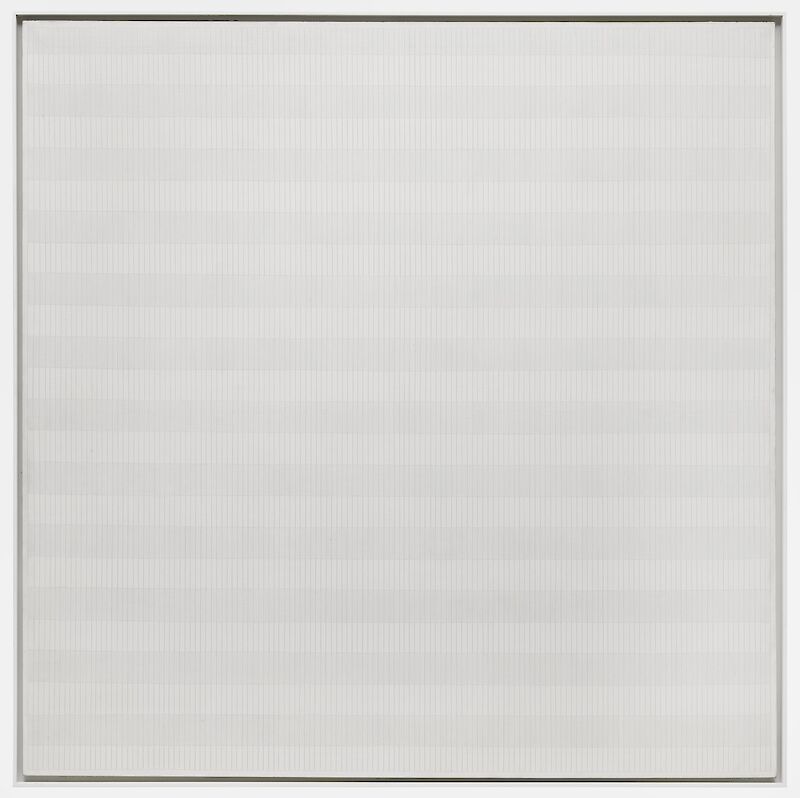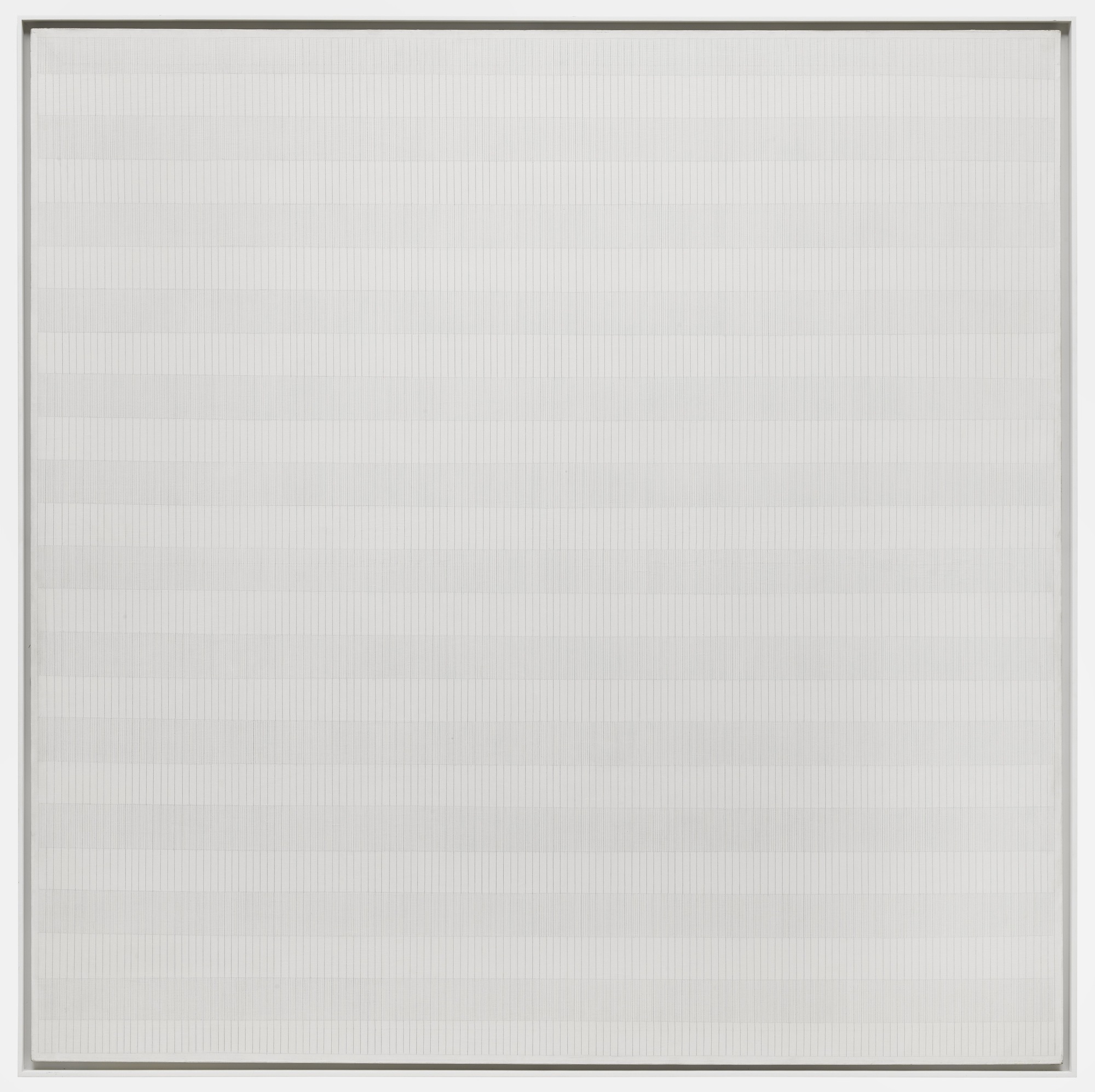


“When I first made a grid I happened to be thinking of the innocence of trees and then this grid came into my mind and I thought it represented innocence, and I still do, and so I painted it and then I was satisfied. I thought, this is my vision.”
Agnes Martin’s grid paintings become stranger the longer you look at them. From a distance, the thin lines almost disappear, and the wide canvasses look blank. Step closer and shimmering horizontal and vertical bands appear, drawn in pencil. They look mechanically elegant, the pristine geometry of a patent algorithm. Closer still, and you see the marks of the artist’s very human hand. Lines waver, become thicker or fade away. The transition from gestalt perfection to up-close imperfection can be experienced in many paintings, but Martin stripped her artwork down to this exact moment.
And it’s an unexpectedly emotional experience. Casual visitors occasionally stop in front of Martin’s grids, and stand with tears running down their face. There’s a reason Martin referred to these works as heartstrings pulled out, endlessly.
The Tree was painted in 1964; Martin referred to it later as her first grid. Martin had been painting grids for years, scratching them into paint, drawing them against a ruler, even applying gold leaf to highlight specific zones within the matrix. But to Martin, this was the first, and that is important. In this tree, she found her vision.
